Historical paintings don’t always stand the test of time. Sometimes dust, fading, and even botched repair jobs leave many of them looking dull, lifeless, and completely unrecognizable. Thankfully, restoration pros have the expertise and patience to revive these masterpieces, often revealing colors, intricacies, and textures that have been erased for centuries. Restoration is pretty much an extreme makeover, but for timeless art. We’ve compiled a list of 16 paintings that got stunning transformations, with before-and-after photos that prove just how much of a difference the right, or wrong, restoration can make.
#1 “View Of Scheveningen Sands” By Hendrick Van Anthonissen
For years, Hendrick Van Anthonissen’s 1641 painting, “View of Scheveningen Sands”, baffled viewers because no one could figure out why crowds were gathered on the beach or what they could’ve been looking at. But as it turns out, a beached whale lay hidden under a layer of overpaint for centuries. Conservators at the Fitzwilliam Museum in Cambridge, UK, made this discovery in 2014, when restoring the painting.
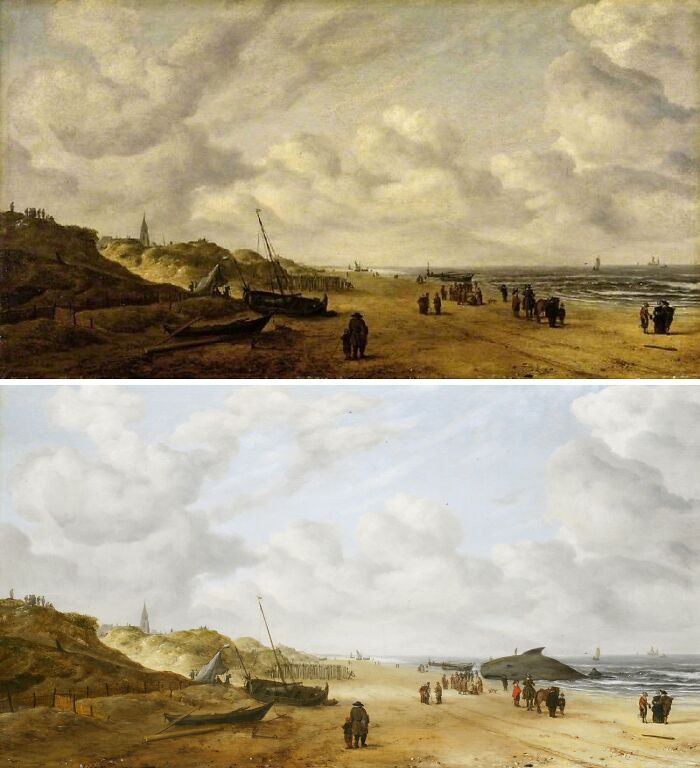
Image source: Hendrick van Anthonissen, The Guardian
#2 “Woman At A Window”
The “Woman At A Window” painting was initially believed to depict a brown-haired, gentlewoman with wide eyes and delicate facial features. Interestingly, when the painting was restored in 1978, it revealed quite the opposite: a blonde-haired woman with narrow eyes and more striking facial features. Many historians theorize that the changes were likely made to conform to Victorian beauty standards.
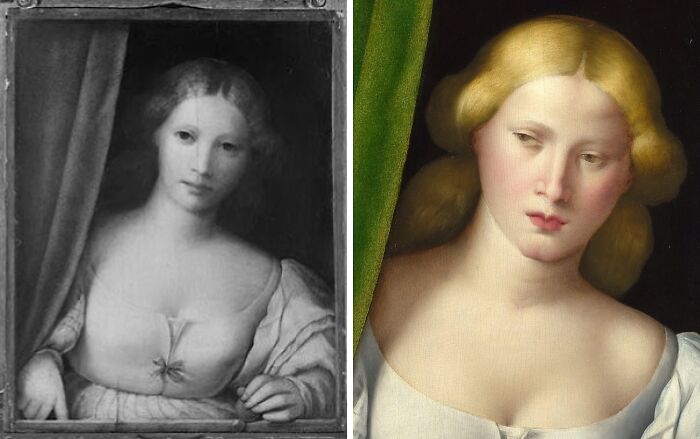
Image source: National Gallery, The National Gallery
#3 “Portrait Of Charles Dickens” By Margaret Gillies
Missing for over a century, this mold-covered miniature portrait of Charles Dickens at just 31 years old was recovered in South Africa in 2017. Just a year later, Art dealer Philip Mould bought and restored the portrait, revealing its stunning details. Mould first displayed it at his gallery, then sold it to the Charles Dickens Museum in London, where it remains on display today.
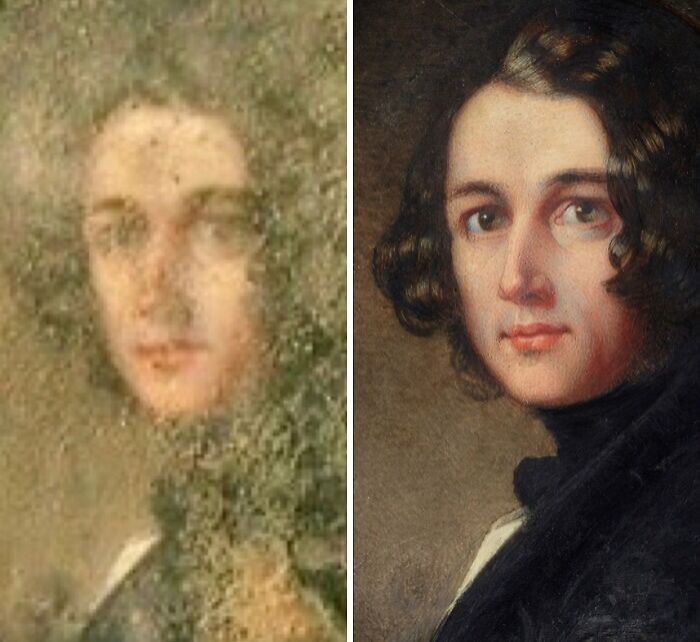
Image source: Philip Mould, Just Collecting
#4 “Ecce Homo” By Elias Garcia Martinez
You’re probably thinking the picture on the left is what Elias Garcia Martinez’s “Ecce Homo” painting of Jesus looked like after it was restored. But shockingly, that was it before Cecilia Giménez got her hands on it. The 82-year-old’s failed attempt at renewing the deteriorating fresco in 2012 resulted in what is now known as “Ecce Mono,” pictured on the right. In a surprising turn of events, the botched artwork went viral and continues to attract tourists to the Borja Sanctuary of Mercy church, where it’s housed today.
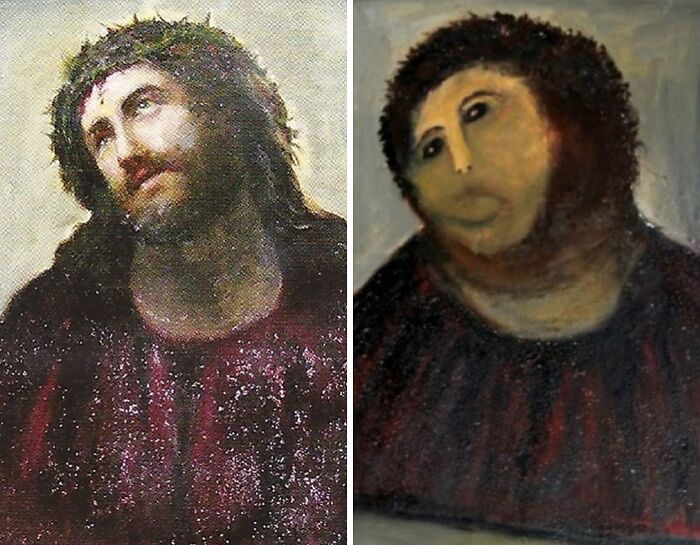
Image source: Elias Garcia Martinez, TIME
#5 “Portrait Of A Young Woman With Unicorn” By Raphael
The 16th-century portrait pictured here is one of three versions revealed during several restoration projects over the years. Before it was restored in 1934, it depicted what was thought to be Catherine of Alexandria holding a wheel in her arms. After the layer of overpaint was removed, a unicorn, which was a medieval symbol of purity and chastity, was revealed. Shockingly, a 1959 X-ray of the portrait uncovered a dog, symbolizing fidelity, in the woman’s arms.
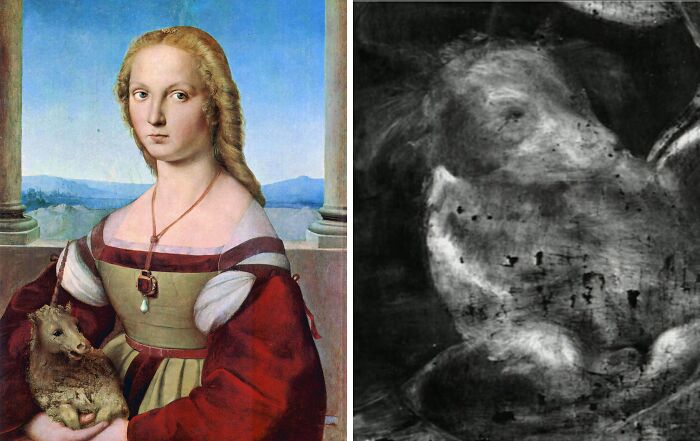
Image source: Mbeech612, Borghese Gallery
#6 “A Dominican, With The Attributes Of Saint Peter Martyr” By Giovanni Bellini
X-rays revealed that this Giovanni Bellini painting was initially just a simple Dominican portrait. Over 100 years after it was first painted, someone who wasn’t Bellini added the dagger, the halo, and the palm branch in an attempt to turn the sitter into Saint Peter Martyr. Further testing revealed that the original painting actually depicted a man standing in front of a green curtain while holding a scroll.
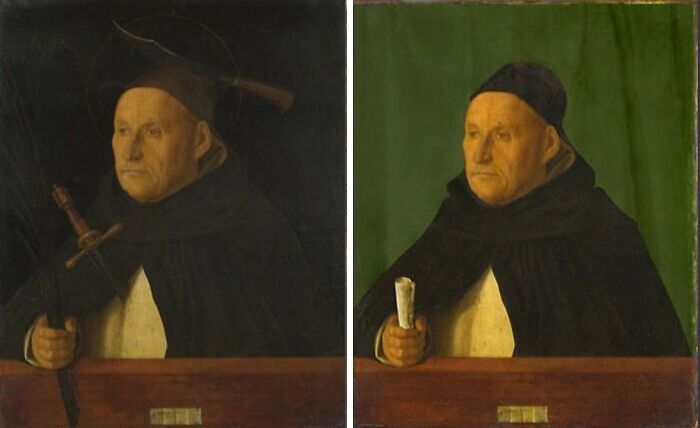
Image source: Giovanni Bellini, National Gallery
#7 “The Lady In Red”
The 400-year-old “Lady in Red” painting was covered in a thick layer of discolored varnish for over 200 years. It wasn’t until 2017, when art dealer Philip Mould used a special gel solvent to clean away the varnish, that the painting’s true colors and details were revealed. Through the restoration, Mould also uncovered that the portrait dated back to 1618 and that the woman depicted was 36 years old at the time she sat for it.

Image source: Philip Mould, W Magazine
#8 “Portrait Of Isabella De’ Medici” By Alessandro Allori
The painting of Isabella de’ Medici pictured on the left was originally thought to be a 19th-century fake. However, after conservators examined the painting more closely in 2014, they discovered that it had layers of overpaint in certain areas, particularly on her face and hands. When they decided to restore the painting, they uncovered that Medici’s features had likely been altered to conform to 19th-century standards of beauty. Instead of the youthful, graceful look, her true face was actually older and more humble. Medici was also holding a jar, and the size of her hand was much larger.
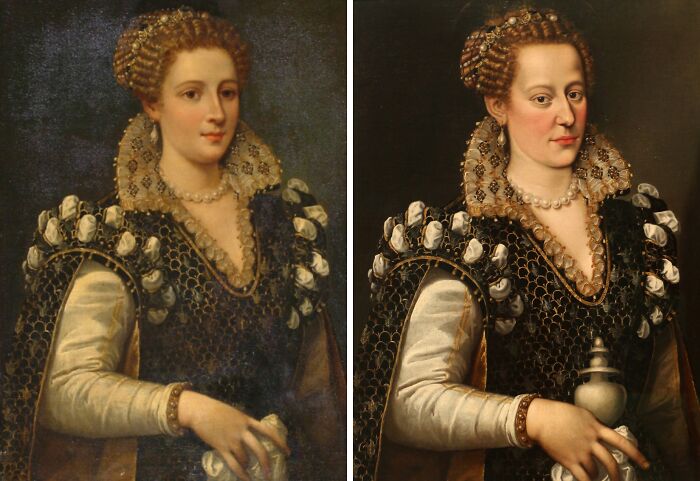
Image source: Alessandro Allori, My Modern Met
#9 “Miss Satterlee” By Charles Bird King
The Smithsonian American Art Museum restored this 19th-century painting by removing the layer of discolored varnish on its surface. Underneath all the dirt and grime, Miss Satterlee’s delicate facial features, elaborate hairstyle, and clothing were way more vivid and visible. Amazingly, the vibrant colors of the bird sitting on her hand were also uncovered during the restoration process.
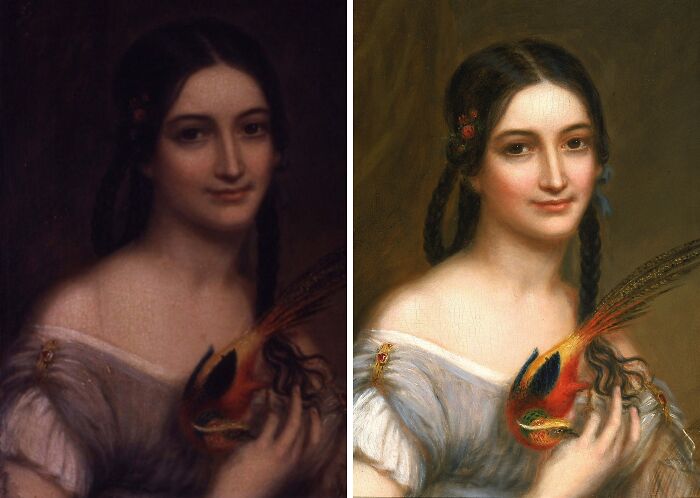
Image source: Charles Bird King, SAAM
#10 “Afternoon On Saco Bay, Coast Of Maine” By William Frederick De Haas
Before this 19th-century artwork by William Frederick was restored, its canvas was uneven, it had a cracked appearance, and the layer of varnish on the surface was discolored and grimy. Once the Smithsonian American Art Museum began restoring it, they uncovered the painting’s breathtaking view of the sky, along with more detailed versions of the boat, coastline, and lighthouse.
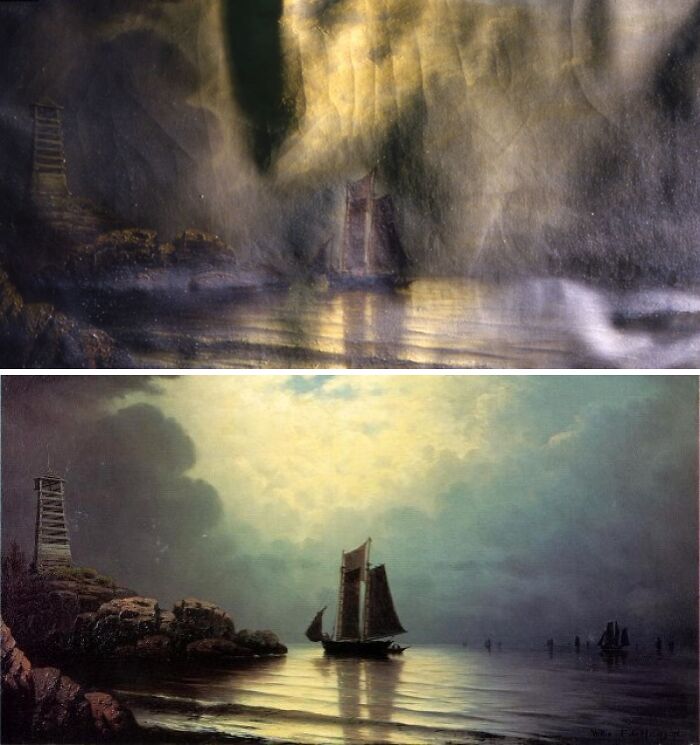
Image source: William Frederick De Haas, SAAM
#11 “Ko-Rak-Koo-Kiss, A Towoccono Warrior” By John Mix Stanley
This 1884 painting of Ko-Rak-Koo-Kiss, a Towoccono warrior, was also restored by the Smithsonian American Art Museum. Before restoration took place, the painting appeared quite dark, and the finer details of both the horse and the warrior weren’t clear. Once the varnish layer was removed, a brighter, more intricate version of the artwork was revealed, and even impressive details, such as the horse’s facial expression, were now visible.
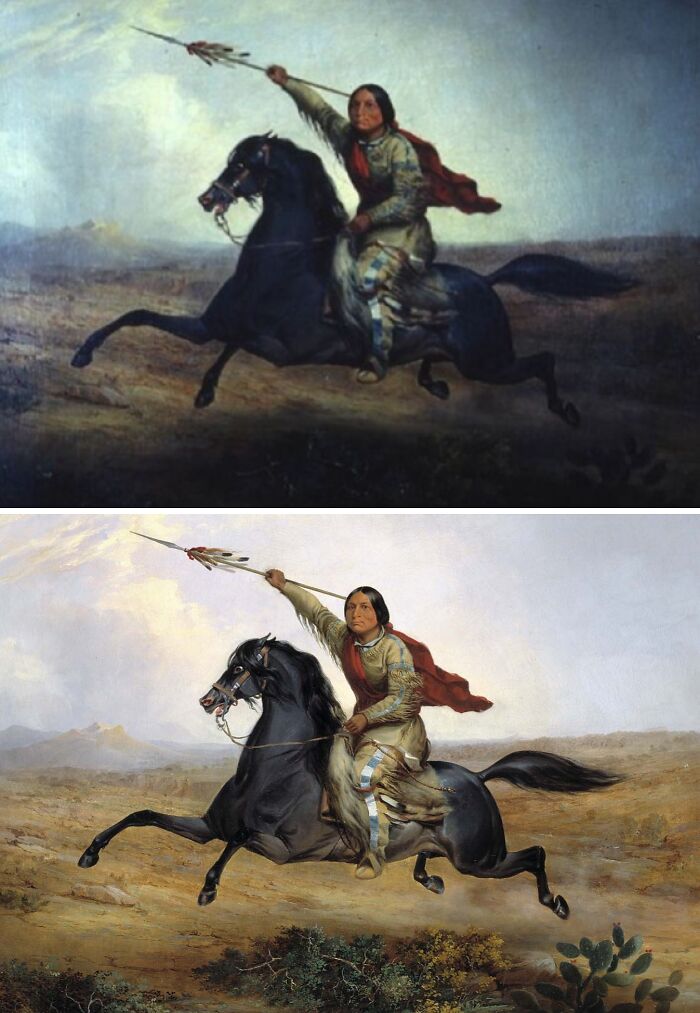
Image source: John Mix Stanley, SAAM
#12 “Portrait Of Twin Sisters”
Julian Baumgartner, a restorer from Chicago, worked on cleaning this 19th-century painting of twin sisters in 2018. Before he started the restoration process, the portrait was dull and gloomy due to years of discoloration. By the time Baumgartner was done working his magic on the artwork, its colors were more vibrant, and the girls’ facial features became more pronounced.
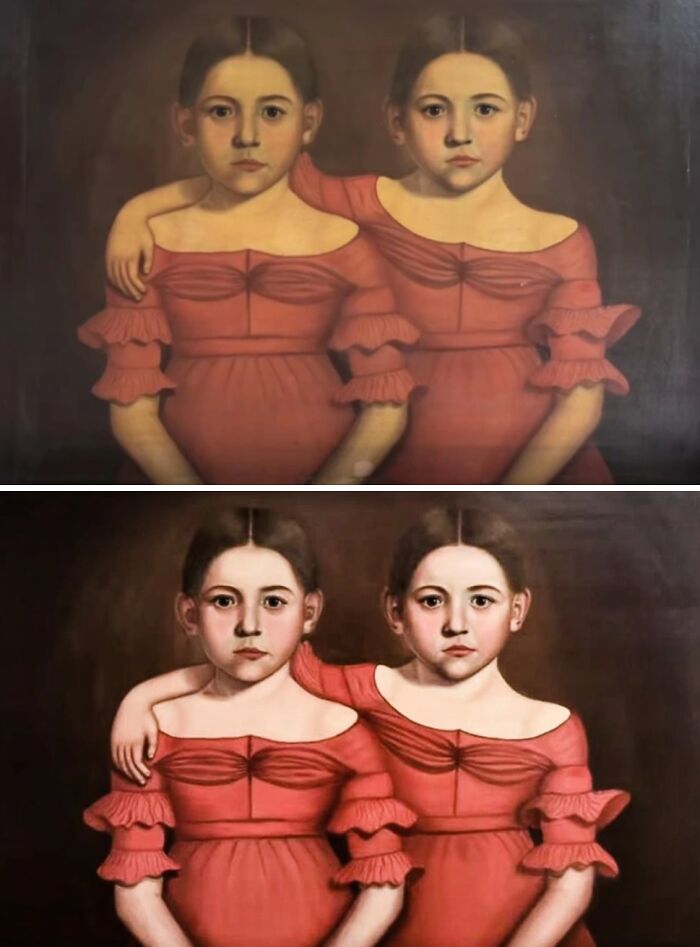
Image source: Baumgartner Restoration, SirVapeington
#13 “Christ Tempted By The Devil” By John Ritto Penniman
John Ritto Penniman’s “Christ Tempted By The Devil” from 1818 underwent restoration at the Smithsonian American Art Museum. The conservation team used adhesives and solvents to prevent further paint loss and to remove the discoloration caused by the old varnish. Remarkably, they were also able to fill in the many white paint loss spots to make the artwork look good as new.
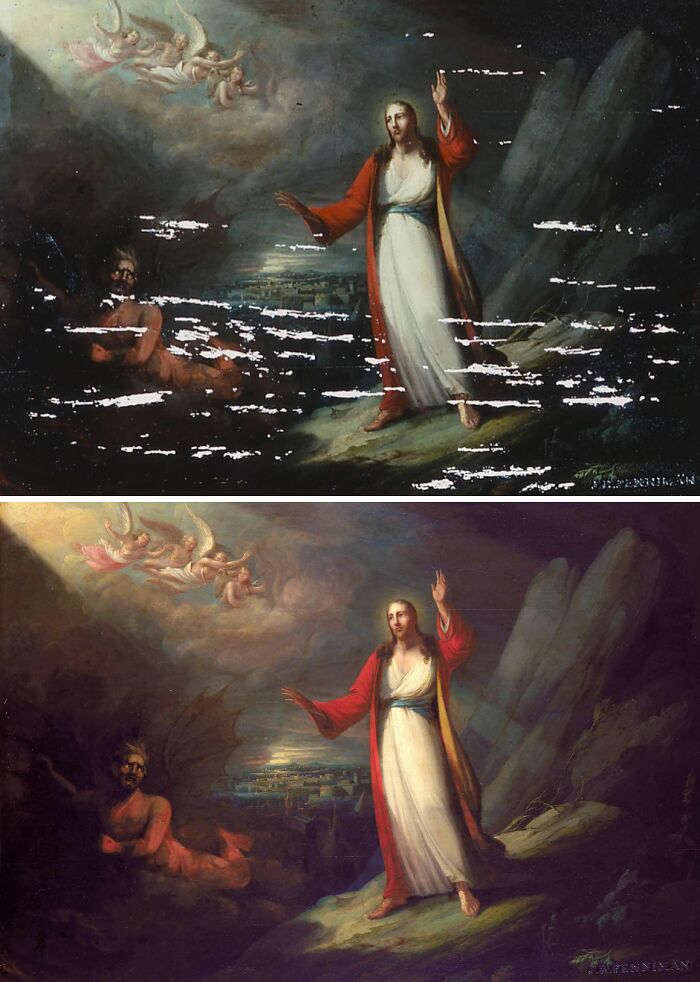
Image source: John Ritto Penniman, SAAM
#14 “Purple Grackle” By John James Audubon
This artwork by John James Audubon was created between 1827 and 1838. Due to poor handling and storage over the years, it suffered several tears, paint losses, and some surface buckling. After some painstaking work, conservators mended the tears, flattened the paper, and filled in the paint losses.
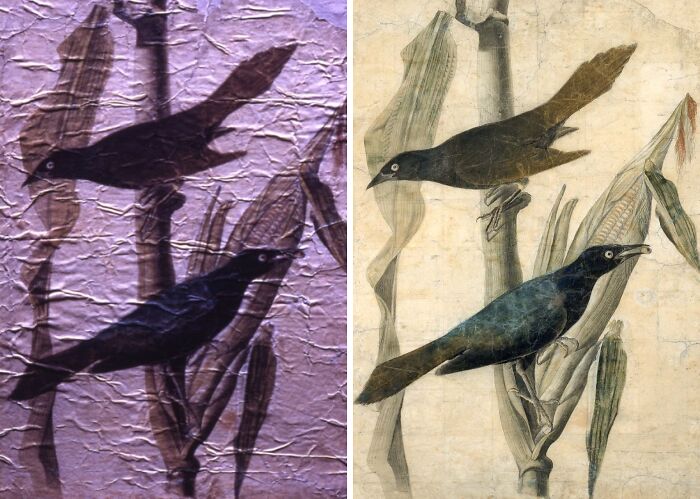
Image source: John James Audubon, SAAM
#15 “Castle Rock, Marblehead” By Alfred Thompson Bricher
The result of the restoration done on this 1878 painting by Alfred Thompson Bricher is really something to marvel at. The conservators at the Smithsonian American Art Museum put their skills to the test when they treated the severe cracking and discoloration on the surface of the painting. With the use of moisture, weights, special solvents, and a lot of tlc, the intricate details in this artwork of Castle Rock were uncovered.
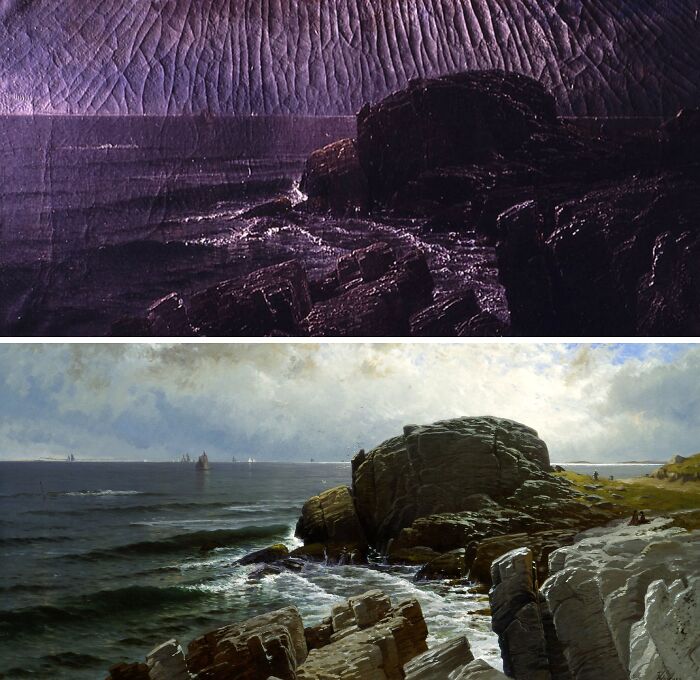
Image source: Alfred Thompson Bricher, SAAM
#16 “Fantastische Landschaft” By Johann Wilhelm Jankowski
As could be expected from an artwork that’s over 100 years old, this 19th-century painting by Johann Wilhelm Jankowski had some serious discoloration and layers of grime on its surface. After the restoration, the landscape surrounding the castle went from blurry and dull to vivid and bright. Notably, the finer details on the castle and the waterscape also became much clearer.
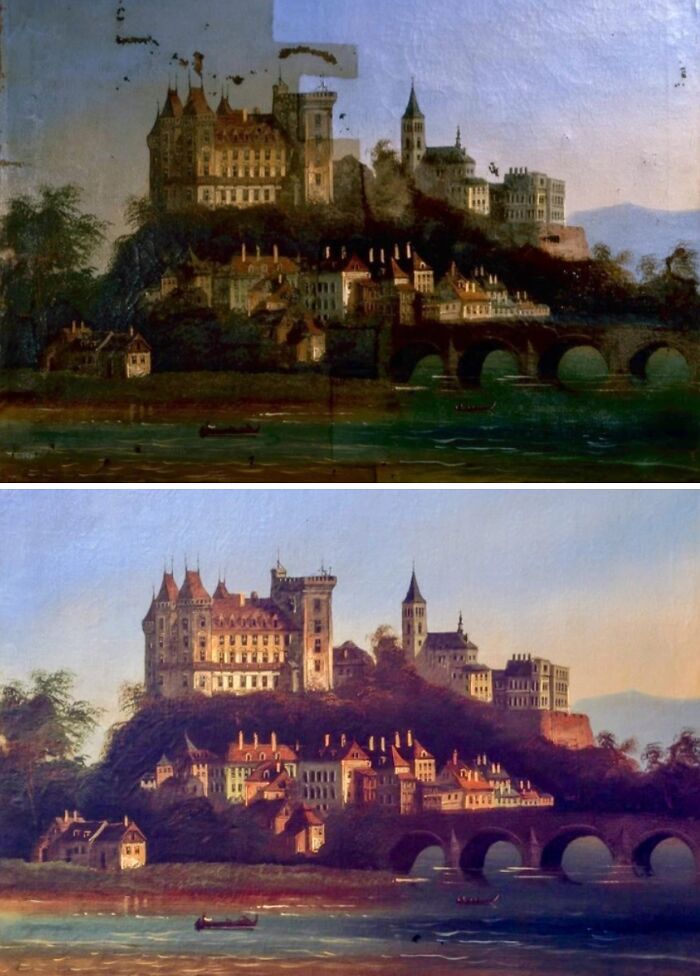
Image source: feridun_ertan, SAAM
 Follow Us
Follow Us





